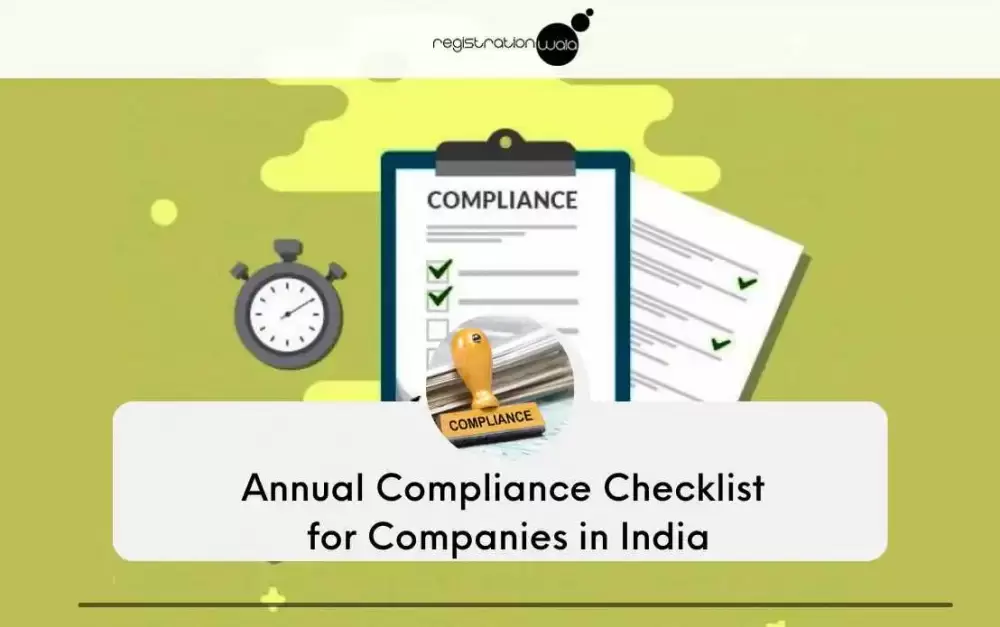“Being the king is harder than fighting for being the king”
This is the sort of synonym that can be mirrored in almost every fact of life. The same goes for start-up companies as well. When we talk about incorporating a company, the process that it goes through is sort of similar to what you would think a fight might be.
The process of getting a proper name the proper implementation of DSC in the applications and many other processes that one goes through company registration process can be quite daunting. However, after the incorporation is successful, does that mean that you get to sit back and relax?
Absolutely not!
Once you have gotten the registration that you desired for so long, you need to make sure that it does not go away. To that end, you need to follow along with a number of compliances. These compliances or rules are set up by several statutes and regulatory bodies. The compliances that you have to follow are there, but are not limited to:
- Holding board meetings.
- Maintaining a book detailing your financial transactions, losses profits, etc.
- Maintaining a proper account of each and every compliance that has been set up.
Now, you already know that there are 9 types of companies in India. Non-compliance of any of them is grounds for penalties. To that end, let us go through a checklist of statutory compliances for each of these business entities:
- Sole Proprietorship Company: This form of business entity has a minimum amount of statutory compliances to follow through. These include the following:
- Annual Income Tax returns: It is returned that should be filed on an annual basis.
- GST Returns: This form of compliance entails the owner of Sole Proprietorship Company to file 3 returns on a monthly basis.
- LLP: The annual compliance for a limited liability partnership are as follows:
- Filing an Annual return:
- Form 11 is needed to be filed in this case. Form 11 is a summary of the LLP partners and it shows if there is any change in the management of the company. This form is needed to be filled before 30th May of every year.
- Filing statements of the accounts and finances:
- It is required that all the LLP make sure to maintain their books of accounts using a double-entry system. A statement of solvency is also needed to be filed. The formed filed for this purpose is Form 8and it should be filed before 30th October for every year.
- Filing the income tax returns: This is a mandatory compliance for almost all the companies. However, the date varies on the following condition:
- If an audit is required, the date is 30th September.
- If an audit is not required, then the date is 31st July.
- Filing the DIR-3 KYC: This is fairly new compliance where the directors or partners of the company have to file a DIR-3 KYC form on an annual basis.
- The last date to fill this form if 31st August for 2018. However, the actual date for filing this has been kept at 30th April 2018.
- One person Company: the annual compliance of one person company are as follows:
- AOC-4: It is a financial filing with the Registrar of Companies.
- MGT-7: It is an annual return to be filed with the Registrar of Companies:
- MGT-9: It is an extract of the above return that is to be filed in the form of a board report.
- Private limited company: The compliance to be adhered by the Private Limited Company are as follows:
- Appointing an Auditor: Now, this auditor will be appointed for 5 years and the form to be filed for this purpose will be ADT-1.
- Statutory Audit of Accounts: The Company will have to maintain and prepare its accounts. These accounts are to be audited by a chartered accountant. This would happen each financial year. Once the accounts are audited, the report is provided to the registrar for filing.
- Annual Return filing: This is a return that has to be filed within 60 days of holding an annual board meeting. The form will be MGT-7.
- Filing the AOC-4: In this form, the financial statements are filed that will include the balance sheet along with the profit and loss account. This form is to be filed within 30 days of holding the general board meeting.
- Holding an annual general meeting: An Annual general meeting or the AGM is to be held every year as part of the annual compliance. This meeting is to be held within 6 months from the end of the financial year.
- Directors Report Preparation: this sort of report will be filed under Section 134. And it will entail all the information pertaining to the director of the company.
- Filing the DIR-3 KYC: This mandatory form is to be filled by every director of the company before 30th April of every year.
- Section 8 Company: the annual compliances for section 8 companies are as follows:
- They need to hold an annual general meeting
- The notice period for these companies should be at least 14 days before the general meeting
- In the case of section 8 companies, they have been granted a 7 days extension in regards to when to send out the financial statements.
- It can appoint any number of directors.
- If the transaction exceeds 1 Lakhs, the director has to disclose the nature of the transaction.
- Nidhi Company: As for the Nidhi company, the compliances are as follows:
- Every Nidhi company has to file a form called NDH-1 along with the prescribed fees. This form has to be duly filled by a company secretary or a chartered accountant. This form should be filled within 3 months of the end of financial year.
- A Nidhi company has to file NDH-2 form if any of the following hasn’t been complied to in a proper manner:
- 200 members in a financial year
- The maintenance of net owned fund to deposit ratio at 1:20.
- If there is a non-compliance with the above two rules for the second financial year, then the company should not accept any further deposits from the individuals.
- Public Limited Company: A public limited company has to adhere to annual compliances and they are as follows:
- AOC-4: this pertains to filing the financial statements to the registrar of companies.
- AOC-3 (CFS): this the form that has to be filled by companies that have subsidiary companies, associate companies and joint ventures.
- MGT-7: To give information related to directors and shareholders for the period of the financial year.
- A Director report has to be filed along with AOC-4, AOC-2 MGT-8 and a secretarial Audit report.
- MGT-14: it is a resolution form that has to be filed annually.
- Producer Company: the annual compliances of a producer company are as follows:
- It is necessary for a producer company to hold one annual general meeting per year.
- The notice of annual general meeting should include Agenda of the meeting.
- A draft of resolutions for appointment of auditors has to be passed.
- An audited balance sheet along with profit and loss statement has to be created.
- The rest of the compliances are pretty similar to private limited company.
- Partnership compliance: in case of partnership compliance, the following has to be followed through:
- If you happen to change the firm name or nature of business, you need to fill our Form II within 90 days.
- If you want to change the branch, you need to file Form III in 90 days.
- If you want to change the constitution of the company, you need fill Form V within 90 days.
- When a minor becomes a major and elects not to become a partner, they have to file Form VI within 90 days.
- It is mandatory for a partnership firm to fill ITR 5 for annual return filing.
The compliance regarding the meetings and the Annual return are common and are applicable for all except for the One Person Company and Sole Proprietorship.
If you want to make sure that you follow along with each and every one of these compliances, you need to get in touch with Registrationwala and get proper assistance regarding this.
If there is one thing to remember here is that the existence of your company relies upon you complying with the rules and regulations setup for companies.





